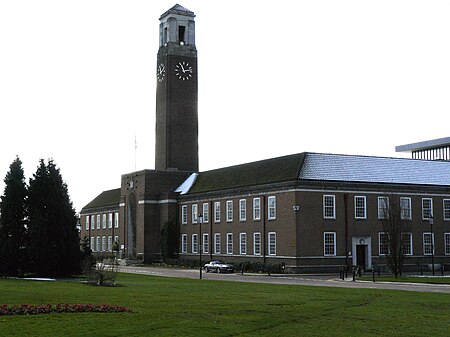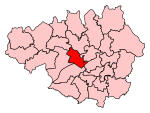The City of Salford ( SOL-fərd) is a metropolitan borough in Greater Manchester, England. The borough is named after its main settlement, Salford and extends its coverage to the towns of Eccles, Swinton,
Walkden and Pendlebury. The borough has a population of 270,000, and is administered from the Salford Civic Centre in Swinton.
Salford is the historic centre of the Salford Hundred an ancient subdivision of Lancashire. The City of Salford is the 5th-most populous district in Greater Manchester. The city's boundaries, set by the Local Government Act 1972, include five former local government districts. It is bounded on the southeast by the River Irwell, which forms part of its boundary with Manchester to the east, and by the Manchester Ship Canal to the south, which forms its boundary with Trafford. The metropolitan boroughs of Wigan, Bolton, and Bury lie to the west, northwest, and north respectively. Some parts of the city, which lies directly west of Manchester, are highly industrialized and densely populated, but around one-third of the city consists of rural open space. The western half of the city stretches across an ancient peat bog, Chat Moss.
Salford has a history of human activity stretching back to the Mesolithic age. There are over 250 listed buildings in the city, including Salford Cathedral, and three Scheduled Ancient Monuments. With the Industrial Revolution, Salford and its neighboring settlements grew alongside the textile industry. The former County Borough of Salford was granted city status in 1926 and thus making it the second city in Greater Manchester after neighboring Manchester. The city and its industries experienced a decline throughout much of the 20th century. Since the 1990s, parts of Salford have undergone regeneration, especially Salford Quays, home of BBC North and Granada Television, and the area around the University of Salford.
Salford Red Devils are a professional rugby league club in Super League and Salford City F.C. is a professional football club in League Two. Old Trafford, the home of Manchester United, in Trafford, is opposite Salford Quays.








